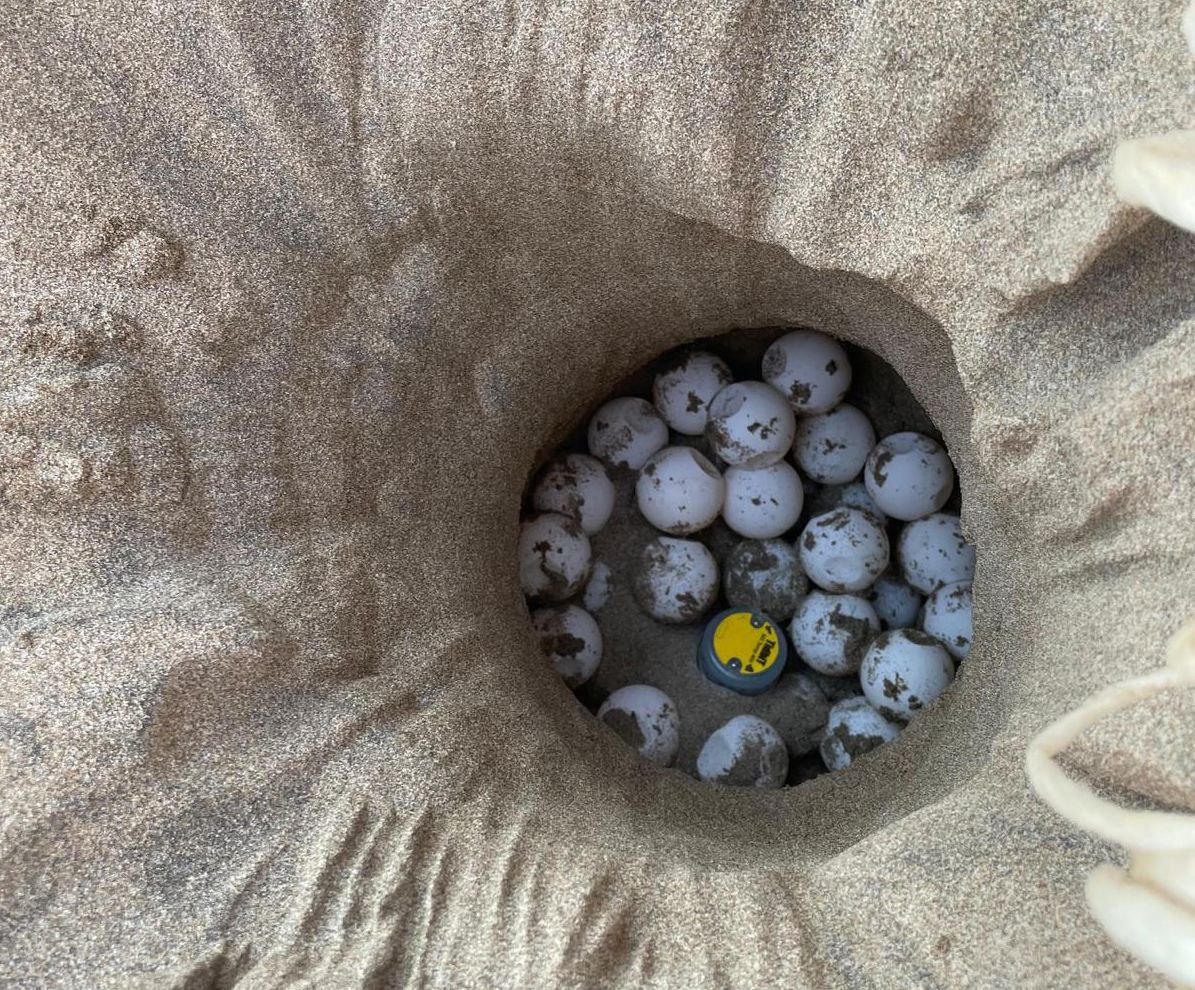In recent weeks, at least fifteen nests have been detected on Spanish coasts, in addition to the hundred nests detected in Italy.
The InGeNi-Caretta project, funded by the Fundación Biodiversidad will study the causes of this colonization in order to facilitate decision making in the planning and management of this threatened species.
In the last decade, beaches of the Western Mediterranean have seen an increase in the frequency of loggerhead turtle (Caretta caretta) nesting. This increase may correspond to a process of colonization as a result of climate change, which is considered of great importance for their survival due to evidence and predictions of feminization and reduced viability of hatchlings on the beaches of their original nesting areas.
However, this emerging colonization is taking place in areas with a high human occupation, as is the case of the Spanish coast, so that an adequate management is necessary to favour the success of these clutches in coexistence with the human presence.
The recent appearance of this colonization process implies that, over the last few years, new capacities must have been developed by the agents involved, both in the scientific and administrative sector. The main factors that can negatively affect this growing population are the lack of public knowledge, the scarcity of scientific information, the alteration of the beaches and the effectiveness of the management measures that are being implemented.
Very active start of the 2023 season
The first nest of marine turtle detected this season in a Spanish beach was laid on the Can Pere Toni beach in Pala, at the beginning of June. In a few weeks, more nests were detected in the beaches of Catalonia, Valencia, Murcia and Andalusia. Some nesting attempts have also been detected. In the face of these events, the action teams could observe and work with several nesting female turtles.
In Catalonia, three of the nests have been located in the Ebro Delta, which may indicate the growing importance of this natural space as a new nesting site. Another remarkable fact of this season is that the nest detected on the beach of Sa Riera, in Begur, is the northernmost nest located so far in the Iberian Peninsula.
This phenomenon is posing a great challenge for the monitoring networks, local and regional governments and research institutions involved, which activate in each case protocols that have been developed recently, both in Catalonia and in the rest of the Spanish coastal communities for the conservation of this threatened species and the collection of scientific data.
This increasing nesting activity is taking place in other areas of the Western Mediterranean areas. Italy is a paradigmatic case: more than a hundred of nests have been detected in the first weeks of this season. Regions such as Campania have detected an increase of more than 50% over previous years.
InGeNi-Caretta project kick off
Thanks to funding from the Biodiversity Foundation, a consortium formed by the BETA Technology Center of the University of Vic-Central University of Catalonia, the University of Barcelona and the Biodiversity Research Institute (IRBio) of the UB, the Polytechnic University of Valencia, with the collaboration of the University of Valencia, and the Doñana Biological Station – CSIC are now working in the InGeNi-Caretta project.
This mutlidisciplinary project is formed by a research team composed of leading experts in sea turtle with the aim of generating the scientific knowledge necessary to understand this unique colonization phenomenon and facilitate decision-making in the planning and management of this endangered species on the Spanish coast. The results of InGeNi-Caretta will allow to improve conservation measures of this species.
The project involves several actions. There will be a detailed study of the potential suitability of Spanish coastal beaches for sea turtle nesting, considering their physicochemical characteristic and better defining the environmental parameters on nesting beaches. On the other hand, it will make it possible to analyze the number, origin and behavior of the reproductive individuals through genomic studies of the nests, as well as their biological efficiency, the number of eggs, the rate of embryonic development and the viability of the hatchlings. Finally, by combining all the data obtained, it will also be possible to evaluate the impact of hatchling genotype on dispersal, viability and growth.
The consortium also hopes to examine the behaviour of females and hatchlings through the use of satellite telemetry and stable isotope studies. This will allow to infer, from their movements, the feeding areas and habitat use of the females prior to laying and their subsequent dispersal, to determine important nesting areas. Finally, the success of exsitu conservation will be studied to evaluate the hatching percentage and viability parameters of the hatchlings in captivity to facilitate head-starting practices.
InGeNi-Caretta is supported by the Fundación Biodiversdiad of the Ministerio para la Transición Ecológica y el Cambio Climático (MITECO) within the framework of the Recovery, Transformation and Resilience Plan (PRTR), funded by the European Union - NextGenerationEU.










 Las altas temperaturas están provocando que las lagunas y las marismas de Doñana pierdan agua rápidamente
Las altas temperaturas están provocando que las lagunas y las marismas de Doñana pierdan agua rápidamente



